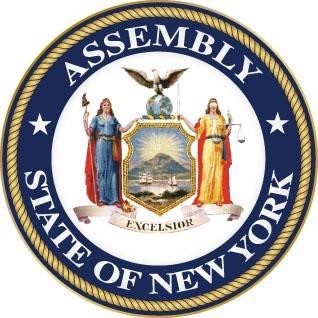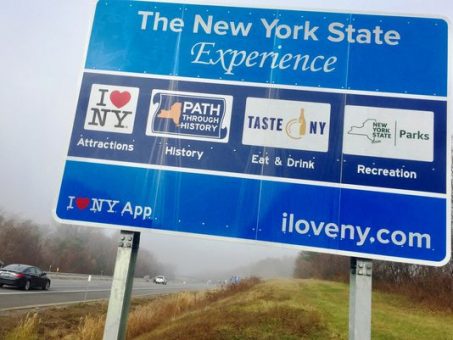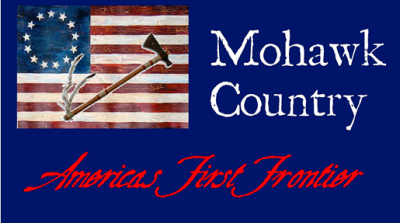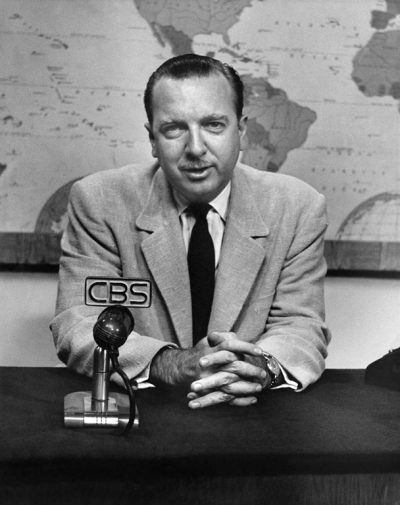
ASSEMBLY STANDING COMMITTEE ON TOURISM, PARKS, ARTS, AND SPORTS
ASSEMBLY SUBCOMMITTEE ON MUSEUMS & CULTURAL INSTITUTIONS
NOTICE OF PUBLIC HEARING
Oral Testimony by Invitation Only
SUBJECT: Impact of Arts and Cultural Organizations on the State’s Economy
PURPOSE: To examine the impact New York’s artistic and cultural institutions have on the economy of the State.
Wednesday, September 26, 2018
1:00pm
Assembly Hearing Room
Room 1923, 19th Floor
250 Broadway
New York, New York
New York is home to many world class artistic venues and cultural organizations. According to the most recent data provided by the U.S. Bureau of Economic Analysis (BEA) and the National Endowment for the Arts (NEA), New York’s artistic and cultural sector generated $114.1 billion to the state economy and employed 462,584 people across the State. This ranks New York second among all states in arts and cultural value added to the economy and in arts and cultural employment. The support and successful marketing of artistic and cultural attractions has the potential to create and sustain jobs and strengthen our State’s economy. The Committees seek to examine the economic impact artistic and cultural organizations have on local communities and the State. This hearing is also an opportunity for the Committees to discuss how new and existing artistic and cultural programs can help increase job growth and economic development throughout the State.
Oral testimony will be limited to 10 minutes duration. Ten copies of any prepared testimony should be submitted at the hearing registration desk. The Committees would appreciate advance receipt of prepared statements.
SELECTED ISSUES TO WHICH WITNESSES MAY DIRECT THEIR TESTIMONY:
1. The impact of arts and cultural tourism on State and local economies.
2. The effectiveness of State-supported programs aimed at enhancing the arts and cultural institutions.
3. The potential for locally-supported events, such as festivals and hosting of conferences in cultural institutions, to increase tourism and impact local economies.
To see the video of these proceedings go to the New York State Assembly website under Committee Hearings.
I attended this meeting. There were ten presentations, each followed by Q&A from the four state legislators:
Robert C. Carroll — District 44 Chair, Subcommittee on Museums & Cultural Institutions chairing his first subcommittee meeting in this capacity
Brooklyn, NY 11215
CarrollR@nyassembly.gov
Angelo J. Morinello– District 145
Niagara Falls, NY 14301
morinelloa@nyassembly.gov
Daniel J. O’Donnell — District 69 Chair, Committee on Tourism, Parks, Arts and Sports Development
245 West 104th Street
New York, NY 10025
OdonnellD@nyassembly.gov
Carrie Woerner — District 113
Saratoga Springs, NY 12866
woernerc@nyassembly.gov
I will not review each of the ten presentations. In general terms, they may be considered press releases on behalf of the activities of the each of the presenting organizations during the past year. In this regard, the emphasis in the reports was on issue #1: the impact of arts and cultural tourism. There were many facts and figures in the verbal presentations that were more than I could digest or put into context while someone read a report.
I confess I take all such figures with a grain of salt to say the least. The true issues are in the definition of tourism and then in arts and cultural institutions. For instance, the global standard uses 50 miles as a cutoff figure. Traveling less than that is considered a day trip. Such travel normally is not considered tourism the way a family vacation is or even business travel is. It puts no heads to beds in the tourism jargon for overnight stays generating sales and lodging tax. There was some discussion of such revenue-producing tourism by out-of-state and international visitors but the overall focus was on local day trips and not vacation tourism.
However it is not quite clear, at least to an amateur like me, what counts as tourist visitation. For the presenters, it apparently was a strictly body count number: here is how many people visited our museum, attended our plays, or participated in our programs.
What about visits to sports events? (The committee includes “Sports Development” in its title.) How about the millions who visit professional sports events and then go home as a day trip? How about to college sports? What about high school sports or theater (some of the presenters were arts and theater organizations)? Is watching a movie at the local multiplex tourism just like visiting a local art museum and historical society? Which generates more money? More admission fees? More popcorn?
In short, there is a big difference between the local visit and the trip involving an overnight stay or a chartered bus (to Broadway). There would seem to be a need to differentiate between visitations and tourism or at least the tourism that generates revenue. And even if revenue is generated, should that be considered tourism. Are the people who stay in motels while visiting loved ones in prisons tourists? (During the meeting Chair O’Donnell advocated for arts programs in prisons and for NYSCA funding to support theater group travel – are they considered tourists?)
There was more of an effort to garner such information in the Q&A session with Ross Levi, Executive Director/Vice President, New York State Division of Tourism – I LOVE NY.
Subcommittee Chair Carroll asked about the breakdown of the 243 million (that number seems high) visitors to New York State who arrived by car and plane. He wanted to know how I LOVE NY reached out to non-car holders. Levi mentioned the airlines that service the state, Delta and Jet Blue, the trains, Amtrak and MetroNorth, and car rental organizations. At the next subcommittee meeting, it might be relevant to talk with these organizations, examine their numbers, and try to determine what happens when people arrive at their destination by plane, train, bus, or car.
Carroll noted the problem of a train traveler from downstate once the train reaches Albany. There are delays while the engine is changed there before continuing the journey. Another presenter noted the difficulty in car rental based on the hours of operation and the ease of access to them at train stops. She suggested we have not unlocked the full potential of New York City travel to upstate because of the difficulties in traveling upstate without a car. What exactly is the tourist supposed to do when disembarking from Amtrak, MetroNorth, or at an airport? One might add why doesn’t every train stop provide a seamless experience for tourists seeking to experience the hidden gems, festivals, and small organizations of the region?
Woerner observed that cultural tourists (meaning real tourists and not daytrips from home) want a bundle of activities. She defined that as including food, lodging, and shopping as well as the cultural heritage, history, or art site visited. She is exactly right and has hit upon the exact problem that has been raised in these blogs time and time again. Levi mentioned the over 800 Path through History events last year and the anticipated more of them this year. He neglected to mention that they do not involve such bundling and are almost exclusively daytrips that generate ZERO tax revenue from heads to beds.
In this regard, it was disappointing that there was no mention of the Ramble. The Ramble was the predecessor to the Path. It now occurs over the four weekends in September. It is a primarily Hudson Valley program operated through NYSOPRHP and not I LOVE NY. It suffers from some of the same shortcomings as the Path through History in being a series of one-off programs. There are no weekend Ramble packages just as there are no weekend or weeklong Path packages. The absence is all the more pressing given the proximity of Ramble events to MetroNorth and Amtrak stations. Here is a perfect example of where the full potential of New York City tourism to the Lower and Mid-Hudson Valley and the Capital Region is not being realized.
People do look at the Ramble website. I have seen people getting off the train to participate in Ramble events. I know people use the I LOVE NY website but I am not sure about the traffic on the Path through History website. Local advertising still would seem to the key here for these local events.
Let me conclude with my favorite example. Let’s put aside all the infrastructure issues. Let’s ignore the problems with LaGuardia Airport, JFK, Penn Station, Port Authority, the subway that make us look like a third world country to people from overseas who are used to a seamless quality transportation system. Let’s ignore the fact that when tourism began in America in the 1820s it involved people being able to seamlessly travel from New York City to the upper Catskills by steamship, stage coach, incline railway, and eventually train. Let’s ignore the fact on the bicentennial of the origin of tourism in the Hudson Valley, it can’t replicate what was done two centuries ago.
Instead, let’s focus how on New York missed a national opportunity to promote tourism to cultural heritage sites in the state. I am referring to the AMC show “Turn” about the American Revolution in New York. This four-year show was set in New York, mainly Long Island, New York City, and the Hudson Valley. The show was filmed in Virginia. Fair enough. Production costs for colonial era sets are cheaper there. Unfortunately when Benedict Arnold fled down the Hudson River after being exposed as a traitor, it looked more like the creek where Andy and Opie used to fish in Mayberry than the majestic river that gave its name to America’s first art form. What’s worse was the advertising for the show. Virginia advertised on it: Come see where the American Revolution occurred. Mind you, this show took place in New York!
1. There were no advertisements on this nationally-seen show to an audience interested in the American Revolution to visit the sites in New York depicted in the show.
2. There were no promotional events or public appearances by the actors at the sites in New York depicted in the show.
3. There were no Paths through History created to take people should they fly/train/drive/bus to New York to the sites depicted in the show.
Will we do any better as the American Revolution 250 begins to be celebrated? Did we do any better for Hamilton?
So to respond to the three issues selected for the presentations for the first meeting:
1. The impact of arts and cultural tourism on State and local economies – Yes, the arts and cultural heritage tourism are important to the State and local economies.
2. The effectiveness of State-supported programs aimed at enhancing the arts and cultural institutions – Yes, State funding helps and it could be bigger but it does not help in promoting cultural heritage tourism. It does not support the collaboration and cooperation needed to create the bundle of activities that tourists want. Its focus on one-off events shortchanges the development of cultural heritage tourism especially outside Manhattan.
3. The potential for locally-supported events, such as festivals and hosting of conferences in cultural institutions, to increase tourism and impact local economies – Yes and the potential for them remains unfilled.
I look forward to future meetings of this subcommittee to address these issues.








